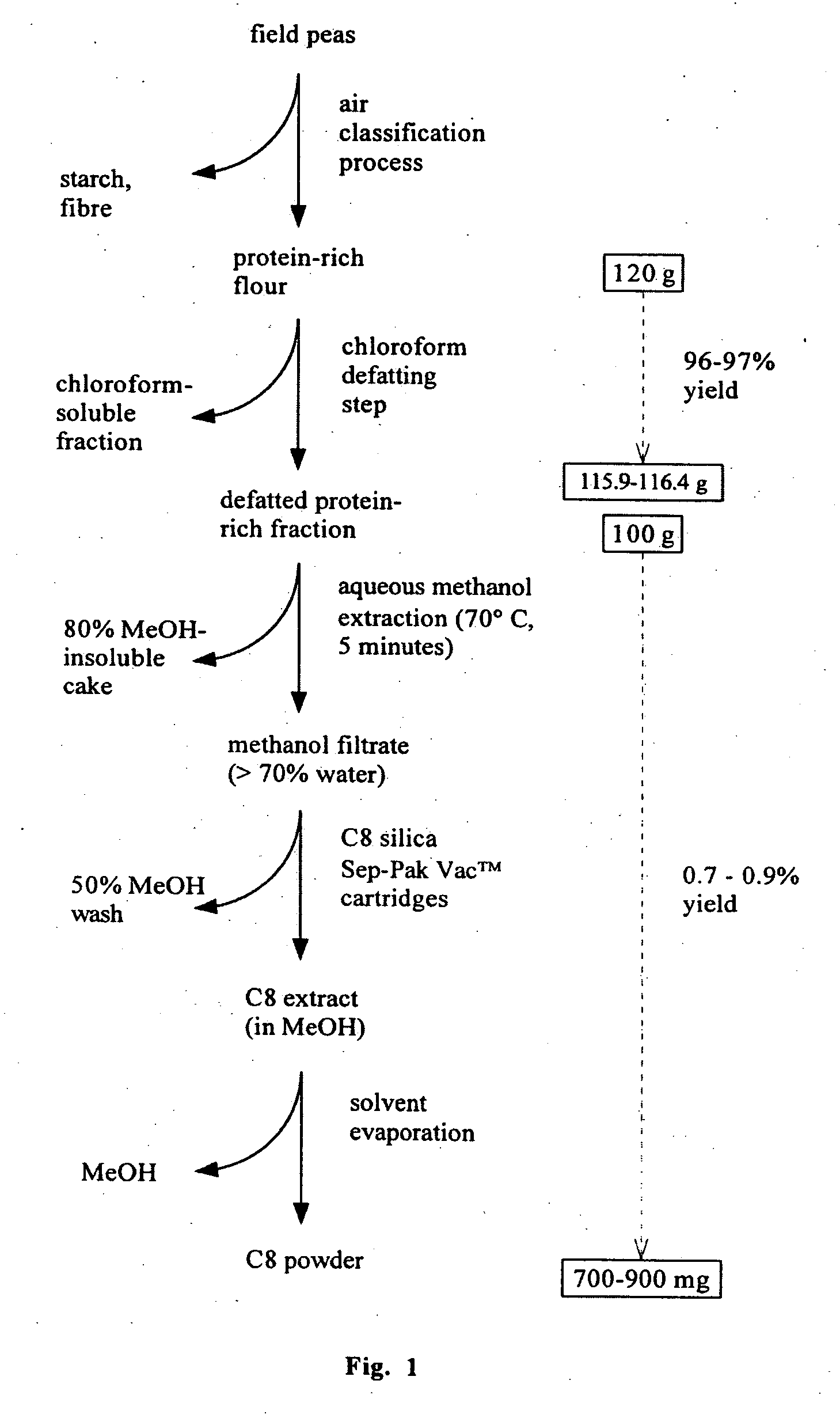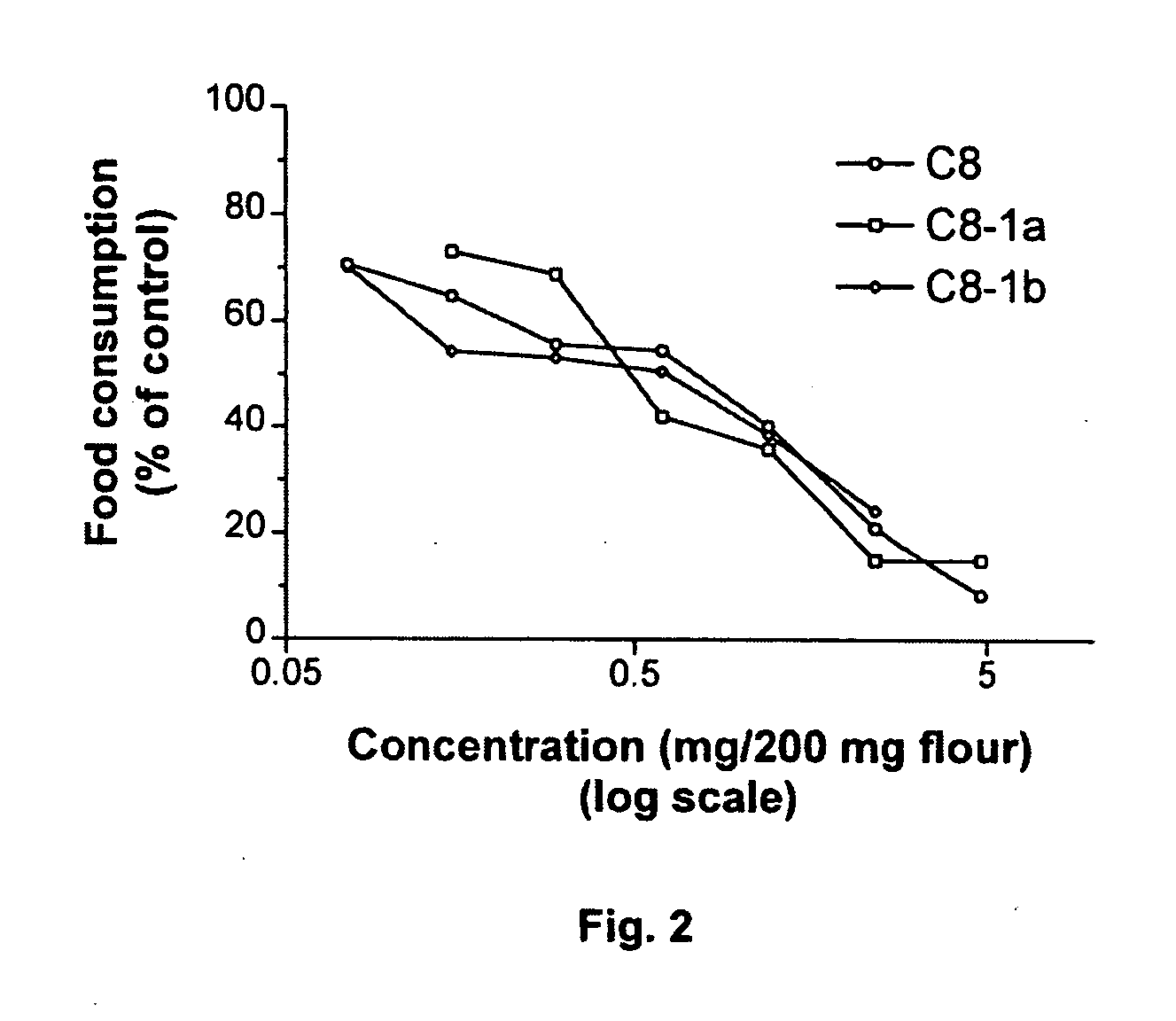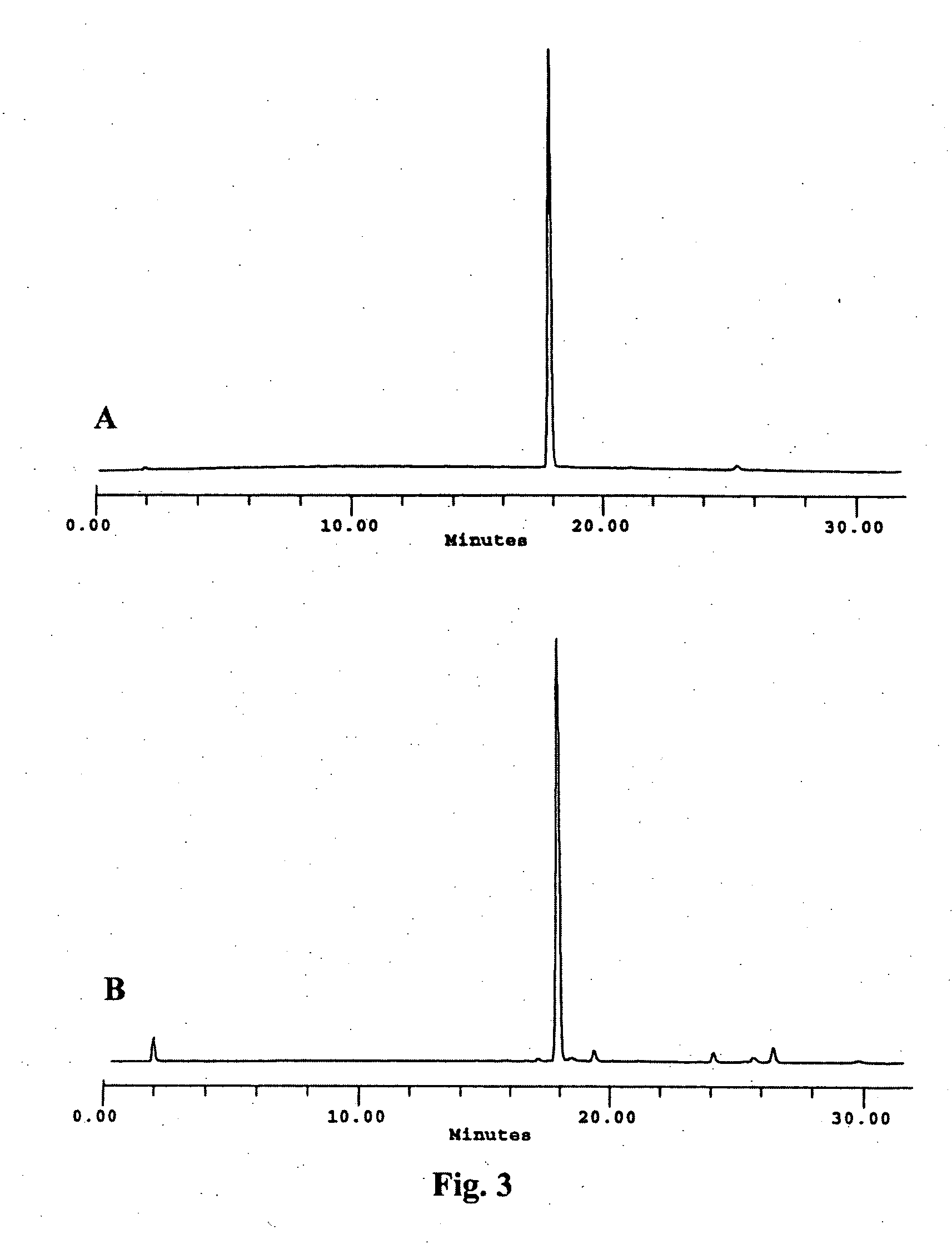Insecticidal extract from legume plants and method of preparing the same
a technology of insecticidal extract and legume, which is applied in the directions of plant ingredients, biocide, plant growth regulators, etc., can solve the problems of affecting the environment, affecting crops, and affecting the growth of insects,
- Summary
- Abstract
- Description
- Claims
- Application Information
AI Technical Summary
Benefits of technology
Problems solved by technology
Method used
Image
Examples
example 1
Isolation of Insecticidal C8 Extracts from Field Peas
[0085] Protein-rich pea flour, obtained by an air-classification process, was supplied by Parrheim Foods Limited. This flour was extracted in the laboratory as shown in FIG. 1. These processes have been described previously (U.S. Pat. No. 5,955,082, issued Sep. 21, 1999 to Bodnaryk et al.,) whereby C8 extracts were isolated in the last step using C8 SepPak Vac™ cartridges (purchased from Waters Corporation). The extracts thus obtained were concentrated by evaporation of the methanol and redissolving the residue in 95% ethanol for testing. In the present work, utilizing two C8 SepPak Vac™ cartridges per 100 g of flour, the C8 extracts (in methanol) were combined and concentrated to dryness at 43° C. with a centrifugal evaporator (model SC 110A Savant SpeedVac Plus) and weighed. Starting with 100 grams of defatted protein-rich fraction, C8 powder (beige in color) was obtained in 0.7-0.9% yield in ten experiments.
example 2
Partitioning Behavior of Antifeedant Substances in the C8 Mixture (Powder Form)
[0086] A small portion of C8 powder (27 mg) was suspended in water (10 ml). The pH (indicator paper) was 6. One-half (5 ml) was removed, extracted three times with an Ames aliquot mixer and 2 ml of ethyl acetate, centrifuging between extractions. Savant evaporation of the combined ethyl acetate fraction gave trace quantities (<1 mg) of a residue. This residue did not show activity (117% feeding) in the rice weevil antifeedant bioassay (see Example 29) with 50% ethanol as solvent. The aqueous layer remaining was adjusted to pH 7.5 with 10% sodium bicarbonate solution and extracted as before with ethyl acetate. The residue (<1 mg) was inactive (98% feeding). Further adjustment of the pH to 9.5 with 10% sodium carbonate solution and extraction with ethyl acetate also gave an inactive residue (106% feeding). Finally, the pH of the remaining aqueous layer was adjusted to 7 with 10% hydrochloric acid. Extracti...
example 3
Fractionation of C8 Powder by Silica Gel Column Chromatography
[0089] A glass column (1.2 cm internal diameter×20.5 cm length) equipped with a solvent reservoir and stopcock was filled with silica gel (Mallinckrodt SilicAR cc-7) using a slurry of the silica gel in chloroform (Merck OmniSolv containing 1% ethanol). The top of the bed was protected with sea sand. C8 powder (130 mg) was applied to the column, after mixing with silica gel, as a 1.25 cm band. Using a slight positive air pressure to maintain reasonable flow rates, the column was eluted with chloroform (75 ml) then with 75 ml volumes of various mixtures of chloroform and methanol followed by pure methanol (Table 1). The column was eluted with more methanol (75 ml) and finally with two additional volumes of methanol (250 ml each). Each of the 12 fractions was rotary evaporated on a Buchi Rotavapor R-114 apparatus with the aid of a Buchi B-169 vacuum system and a water bath (maintained at ≦45° C.). The residue that remained ...
PUM
| Property | Measurement | Unit |
|---|---|---|
| mass | aaaaa | aaaaa |
| pH | aaaaa | aaaaa |
| pH | aaaaa | aaaaa |
Abstract
Description
Claims
Application Information
 Login to View More
Login to View More - R&D
- Intellectual Property
- Life Sciences
- Materials
- Tech Scout
- Unparalleled Data Quality
- Higher Quality Content
- 60% Fewer Hallucinations
Browse by: Latest US Patents, China's latest patents, Technical Efficacy Thesaurus, Application Domain, Technology Topic, Popular Technical Reports.
© 2025 PatSnap. All rights reserved.Legal|Privacy policy|Modern Slavery Act Transparency Statement|Sitemap|About US| Contact US: help@patsnap.com



